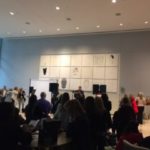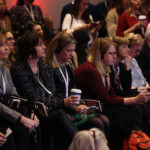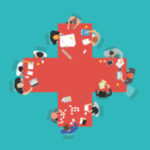
The American College of Emergency Physicians (ACEP) has always had a perfectly fine show floor — well stocked with exhibitors, popular with attendees, providing a steady source of revenue. But during an Exhibit Advisory Committee meeting after ACEP’s 2012 Scientific Assembly, some of the organization’s larger exhibitors said they were looking for something more.
“They wanted a different kind of dialogue [with attendees],” said Robert Heard, CAE, ACEP’s associate executive director. “They told us, we want to really not be standing there hawking people to come into our booth and have the salespeople corner them…. How can we engage in more meaningful discussions about the problems in emergency care and solutions that particular vendors really offer?”
The answer clicked for Heard when he and Debbie Smithey, CMP, CAE, ACEP’s director of educational meetings, attended a program on the hotel room of the future at ASAE’s Annual Meeting & Exposition. “It hit us at the same time, because we’d been having these conversations,” Heard said. “We said, why couldn’t we do the emergency department of the future?”
Their new concept, called innovatED, debuted at ACEP’s 2013 Scientific Assembly in Seattle — a 7,500-square-foot mockup of an emergency department smack in the middle of the exhibit hall. ACEP worked with FreemanXP to design the space, which featured 36 sponsors spread among a variety of treatment rooms, showcasing innovative resources in areas such as triage, technology, communication, and patient flow. Companies had to apply to participate, Heard said, “and they had to really explain what was different about their product or their service, and how ultimately that was improving patient care.”
Adopting medicine’s case-based education model, ACEP had an app with emergency-medicine cases — for example, Heard said, “It was a motorcycle crash, and this and this happened to them” — recorded on audio that attendees could follow through the innovatED space. At the front of innovatED, there was a small theater where speakers delivered 10-minute ED Talks. “People could apply [to speak] who had a great idea or innovation about improving throughput,” Heard said, “or whatever it might be to make the emergency department work more efficiently.”
innovatED was an immediate hit, with more than half the conference’s attendees visiting at least once. The program didn’t cannibalize ACEP’s traditional exhibit hall; in fact, the show sold out and ACEP had to add space. And innovatED was a new source of revenue.
At the 2014 Scientific Assembly, held at Chicago’s McCormick Place last October, ACEP expanded innovatED to 10,000 square feet, with 53 sponsors participating. New elements included mock drills, simulations, and other emergency scenarios written by ACEP’s various member sections. There was a pre-hospital area with an ambulance showcasing cutting-edge technology, and a telemedicine robot roaming the floor with which attendees could interact.
“People were just intrigued by [innovatED],” Heard said. “In the evaluations, they [said they] really felt it was worthwhile spending their time in there. And they said that there were certainly things that they were going to bring back and implement in their emergency department.”



